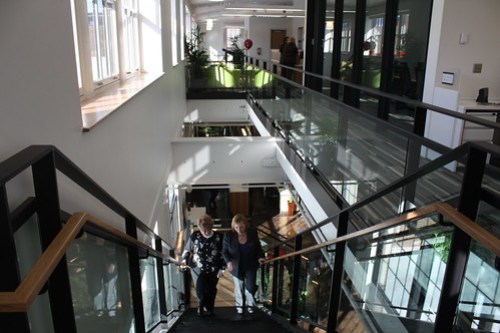
The University of Minnesota, Morris, recently open its new Welcome Center, a major renovation of what had become a sad little building into a shining, spiffy new space. Among other things, it’s a real tribute to the campus’s commitment to sustainability:
When certified, the Welcome Center will be the first LEED Platinum building in the University of Minnesota system; the first LEED Platinum building on the National Register of Historic Places; and one of only thirteen higher education LEED Platinum certified buildings in the world. The Welcome Center is also the first building in Minnesota to use energy efficient chilled beam technology.
They’ve put out a call for art for the building, with a particular interest in work from alumni and others connected to the campus. In a foolish moment, I’ve submitted 20 photos. Now we wait and see if they want to purchase any of them!

